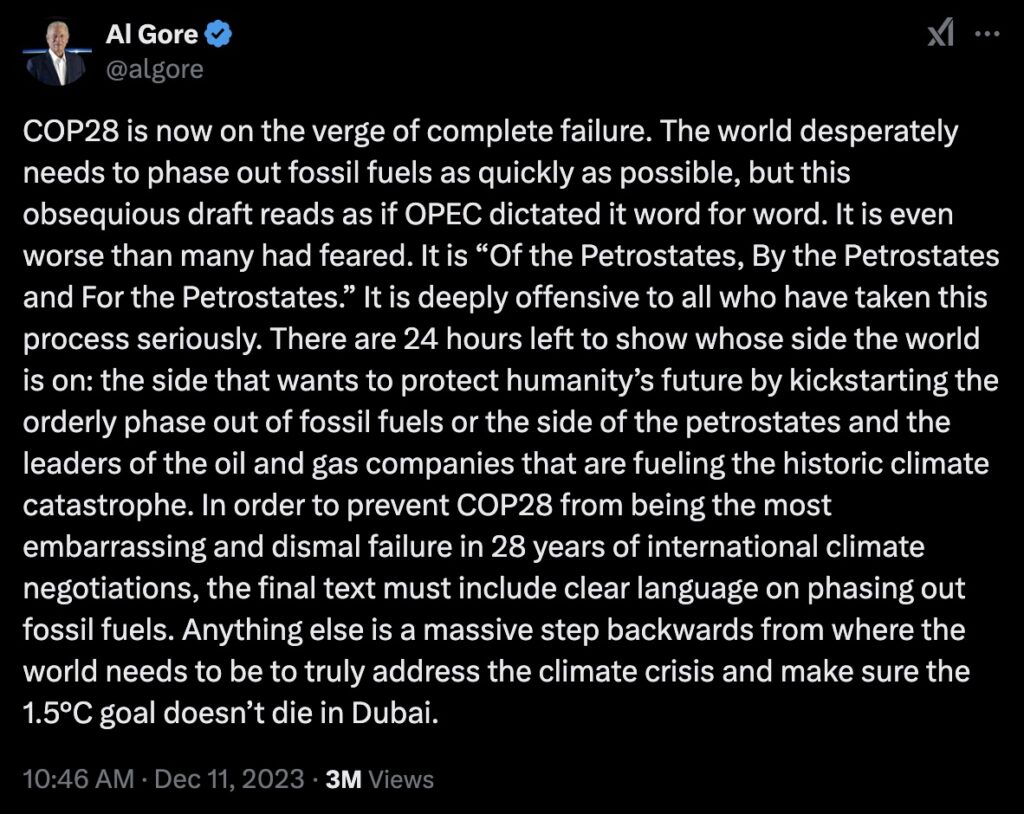It could be the greatest political irony of all time.
For years (decades even) nuclear power was shunned as a toxic and dangerous alternative energy source.
Of course every form of dispatchable energy (that’s an energy source you can start up on demand) comes with some drawbacks — even the renewable sources that are supposed to save the world.
Today, the global powers that once shunned it may actually be turning to embrace it as the savior of their movement.
And this shift could very well create a major opportunity for mining investors…
A Quick Bit of History
If you’re not familiar, the Conference of the Parties (COP for short) is the annual gathering in which United Nations members fly to some exotic resort location on their private jets to spend a week lamenting climate issues.
It started way back in 1995 in Berlin.
By 2023 when COP 28 was held in Dubai (we kid you not, the annual green energy hoedown was held in one of the global capitals of fossil fuel) reality was beginning to hit home. Noted in a brief from the UN Conference on Climate Change:
The stocktake recognizes the science that indicates global greenhouse gas emissions need to be cut 43% by 2030, compared to 2019 levels, to limit global warming to 1.5°C. But it notes Parties are off track when it comes to meeting their Paris Agreement goals.
Parties were “off track…”
In other words, the great green transition wasn’t working out as planned. Apparently countries — especially small poorer developing countries who care less about saving the planet than they do about surviving — were dragging their feet. Because the green dream wasn’t filling the bill.
Perennial climate doomsayer Al Gore wailed at the results…

Source : X
But…
While the final document ultimately did announce the “Beginning of the End” for fossil fuels, the conference did put out another more significant statement as noted by the IAEA:
For the first time since the annual climate summits commenced in 1995, the 198 signatory countries to the UN Framework Convention on Climate Change (UNFCCC) officially called for accelerating the deployment of low-emission technologies including nuclear energy to help achieve deep and rapid decarbonization, particularly in hard-to-abate sectors such as industry and through the low carbon production of hydrogen.
Among the documents put out during the event was another one titled the Declaration to Triple Nuclear Energy.
Just last year at COP 29, six more countries jumped on the nuclear bandwagon.
Demand for Uranium
There’s no question that when global governments get together to solve problems, glaciers melt faster than they get things done.
But they are good at spending money.
During the discussions, IAEA DG’s Grossi stated, “Finance institutions must adapt and keep pace with what the market calls for―and there’s a clear demand for nuclear.” He went on to say, “The tools are there: government support, green loans, public-private partnerships, and international co-financing,” pointing out that commitment is now needed. “Nuclear energy is critical to keeping the 1.5°C goal within reach, and it’s time we collectively unlock its full potential.”
So what does all this mean for uranium?
Well… the bottom line is this…
It takes approximately 75 metric tons of low-enriched uranium to power a 1,000 MWe nuclear reactor.
Should these countries start moving forward with their new love of nuclear, a serious bull market in uranium — and uranium miners — could be on the way.
